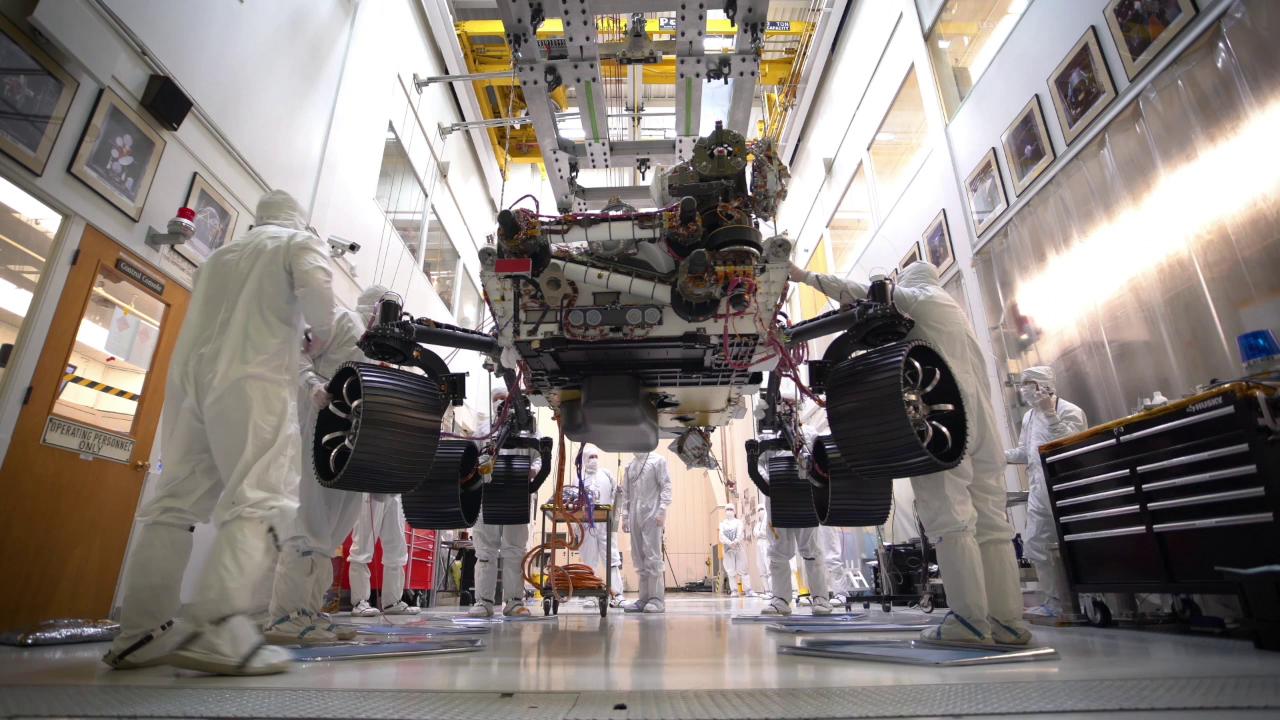
Progress continues for NASA’s Mars 2020 rover, set to begin its journey to the red planet next year. The rover was recently lowered onto the ground, with the vehicle taking its full weight on its wheels and legs for the first time.
The legs are made of titanium, while the wheels are aluminum. The rover has a suspension system with multiple pivots which will allow it to drive over rocky and uneven terrain, and it can even handle extreme tilts of up to 45 degrees in any direction without tipping over.
“After years of design, analysis, and testing, it is fantastic to see the rover on her wheels for the first time,” Ben Riggs, a mechanical systems engineer working on Mars 2020 at NASA’s Jet Propulsion Laboratory, said in a statement. “The whole team looks forward to seeing her in the same configuration on Mars in the not too distant future.”
As well as the footage of the rover standing on its wheels, NASA has also released a time-lapse of engineers stripping off the layer of anti-static foil which had protected the rover in its move from one JPL building to another.

The foil is a necessary part of keeping the rover clean and free of contaminants: “The Mars 2020 rover will be collecting samples for future return to Earth, so it must meet extraordinary cleanliness measures to avoid the possibility of contaminating Martian samples with terrestrial contaminants,” Paul Boeder, contamination control lead for Mars 2020 at JPL, said in a statement. “To ensure we maintain cleanliness at all times, we need to keep things clean not only during assembly and testing but also during the moves between buildings for these activities.”
The Mars 2020 mission is set to launch in July next year, and the rover should land on Mars in February 2021.



